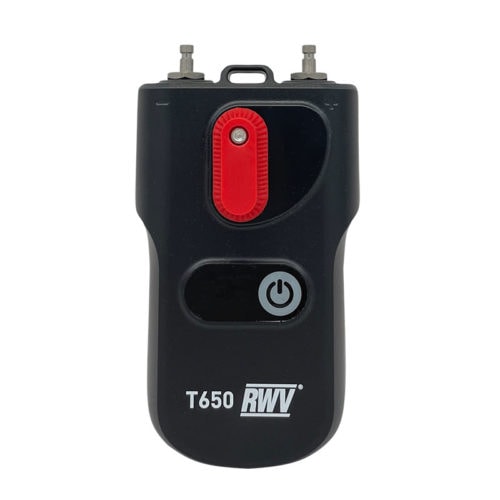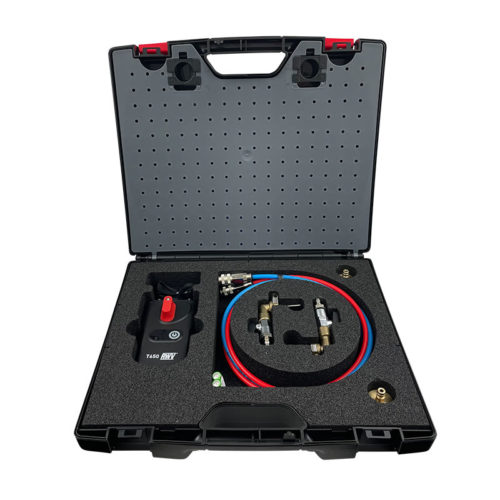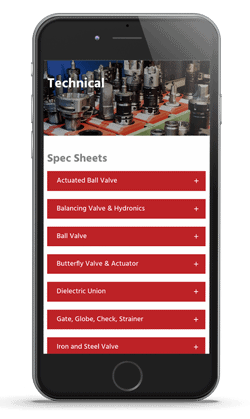What is a Differential Pressure Manometer?
Comments Off on What is a Differential Pressure Manometer?As the name might suggest, a differential pressure manometer measures the difference in pressure between two readings. These devices help operators and technicians assess the functionality of industrial equipment or HVAC systems. For example, a technician can measure the pressure on either side of an air filter and use the difference to determine if the filter is operating within acceptable parameters. Differential pressure manometers come in multiple different variations to suit different applications. In this article, we’ll discuss the different types of manometers and their advantages.
Differential Pressure Manometer vs. Single Pressure Manometer
 Manometers can be broken into two broad categories: differential pressure and single-pressure.
Manometers can be broken into two broad categories: differential pressure and single-pressure.
- Differential pressure manometers take two or more measurements and find the difference between each. They can read positive pressure or a vacuum on either side of the equation. Technicians use differential readings for repairs, inspections, and assessments.
- Single pressure manometers only measure one pressure source and compare it to the open atmosphere. The comparison between a single pressure source and the atmosphere is also called gauge pressure.
Differential pressure manometers and single-pressure manometers are available in varying standard and smart options.
U-Tube vs. Digital Manometers
The original iteration of the manometer came in the form of a U-tube manometers. U-tube manometers consist of U-shaped tubes partially filled with mercury (which is a liquid at room temperature), oil, or water. The units of the U-tube manometer display in inches of mercury (inHg) when using a mercury device, or inches of water (inH20) if using oil or water.
The level at which the liquid is equal on either side of the U-bend is marked as zero. As pressure is applied to one end of the tube, that fluid measure decreases and the fluid on the other half of the U-bend grows higher. U-tube manometers can also measure negative pressures, or vacuums.
These tools are fragile and not generally fit for active industrial environments. Instead, they are most commonly used in laboratories and scientific applications. They also can’t hold multiple readings or be automated or digitized. Another drawback of U-tube manometers is their susceptibility to environmental factors. The pressure readings can be affected by atmospheric changes, altitude, and density or gravity variations from day to day. This requires manual corrections to overcome.
Conversely, digital manometers don’t use physical fluids to measure differential pressure or gauge pressure. They can be portable, interface with computers or programmable logic controllers (PLCs), and hold dozens or hundreds of readings to best suit busy industrial applications. These tools have microprocessors and complex code that can average high volumes of readings to balance out atmospheric changes and complications. Digital manometers are well-suited to complex industrial environments and can transmit the data to multiple different devices and systems to allow for better process control and maintenance.
<Explore RED-WHITE VALVE CORP.’s selection of balancing valves.>
Differential Pressure Manometers from RED-WHITE VALVE CORP.
 At RED-WHITE VALVE CORP., we create high-performance digital differential pressure manometers. Our Balancing Computer model can hold up to 20,000 pressure readings at any given time to allow for complex process monitoring and extreme accuracy. Our devices also hold up to 1,200 valves in the memory simultaneously, identifying the valves through image-based detection. These devices also feature a lithium-ion rechargeable battery, a USB charger, a mini-USB port to interface with PCs and PLCs, and a 2.2-inch QVGA RGB 240 x 320 screen.
At RED-WHITE VALVE CORP., we create high-performance digital differential pressure manometers. Our Balancing Computer model can hold up to 20,000 pressure readings at any given time to allow for complex process monitoring and extreme accuracy. Our devices also hold up to 1,200 valves in the memory simultaneously, identifying the valves through image-based detection. These devices also feature a lithium-ion rechargeable battery, a USB charger, a mini-USB port to interface with PCs and PLCs, and a 2.2-inch QVGA RGB 240 x 320 screen.
If you want to see how our digital differential pressure manometers can help with process improvements in your operation, contact us today.

